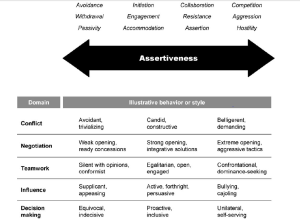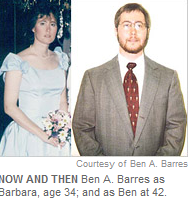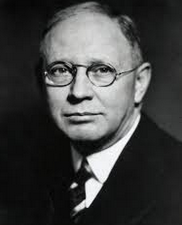Confidence is correlated with career effectiveness and advancement.
However, people who exhibit too much of a good thing may seem “narcissistic.”
Narcissistic personality is characterized by:
-Inflated views of the self,
-Grandiosity,
-Self-focus and vanity,
-Self-importance,
according to San Diego State University’s Jean M. Twenge, with Sara Konrath and Brad J. Bushman of University of Michigan, collaborating with University of South Alabama’s Joshua D. Foster, and Keith Campbell of University of Georgia,
One well-validated assessment instrument to identify narcissism is the Narcissistic Personality Inventory, developed by University of California Berkeley’s Robert Raskin and Calvin S. Hall.
Raskin and UC Berkeley colleague, Howard Terry examined responses from more than 1000 volunteers and found seven constructs related to narcissism:
- Authority,
- Exhibitionism,
- Superiority,
- Vanity,
- Exploitativeness,
- Entitlement,
- Self-Sufficiency.
They related ratings of “self” and “ideal self” to participants’ responses on the Leary Interpersonal Check List, developed by Harvard’s Timothy Leary before he investigated psychedelic drugs.
An alternative to Leary’s lengthy NPI was developed by University of Michigan’s Sara Konrath, Brian P. Meier of Gettysburg College, and Ohio State’s Brad J. Bushman of Indiana University.
The Single Item Narcissism Scale (SINS) measures grandiosity, entitlement, and low empathy characteristic of “narcissistic” behavior.
The team asked more than 2,200 participants to rate their answer to a single question on a scale of one to seven: To what extent do you agree with this statement? “I am a narcissist.”
Konrath’s team demonstrated that the Single Item Narcissism Scale is a valid, reliable alternative to longer narcissism scales because it is significantly correlated with scores on the NPI and is uncorrelated with social desirability.
People who score high on the NPI and SINS say that they are more arrogant, condescending, argumentative, critical, and prone to brag than people who score low on the NPI, according to University of Toronto’s Erika Carlson.
Narcissism was also related in Konrath’s validation studies to:
- Negative emotions including anger, shame, guilt, and fear,
- Low empathy for others including low perspective-taking, low caring concern, and little personal distress when others experience distress,
- Minimal commitment to relationship partners.
People who scored high for narcissism also showed behaviors that can be problematic at work:
- Anger and aggression in response to perceived threats to “self-worth”, and “insufficient” admiration and respect, as in performance reviews,
- “Salary entitlement” in believing they deserve higher compensation than peers, even under adverse business conditions.
However, people who scored high for narcissism displayed positive attributes including:
- High creativity,
- Happiness,
- Self-esteem,
- Resistance to anxiety and depression.
Interacting with a narcissist in the workplace can be challenging, and a previous blog post identifies recommended strategies.
-*How do you identify narcissists in the workplace and in personal life?
-*What are more effective ways to work with them?
RELATED POSTS:
- Least Skillful Performers May Have Greatest Self-Delusions of Skill
- Managing “Triadic Managers” and Navigating Office Politics by Becoming a Little Like Them
- “Honest Confidence” Enables Performance, Perceived Power
- Costs of Workplace Incivility
©Kathryn Welds




















































































